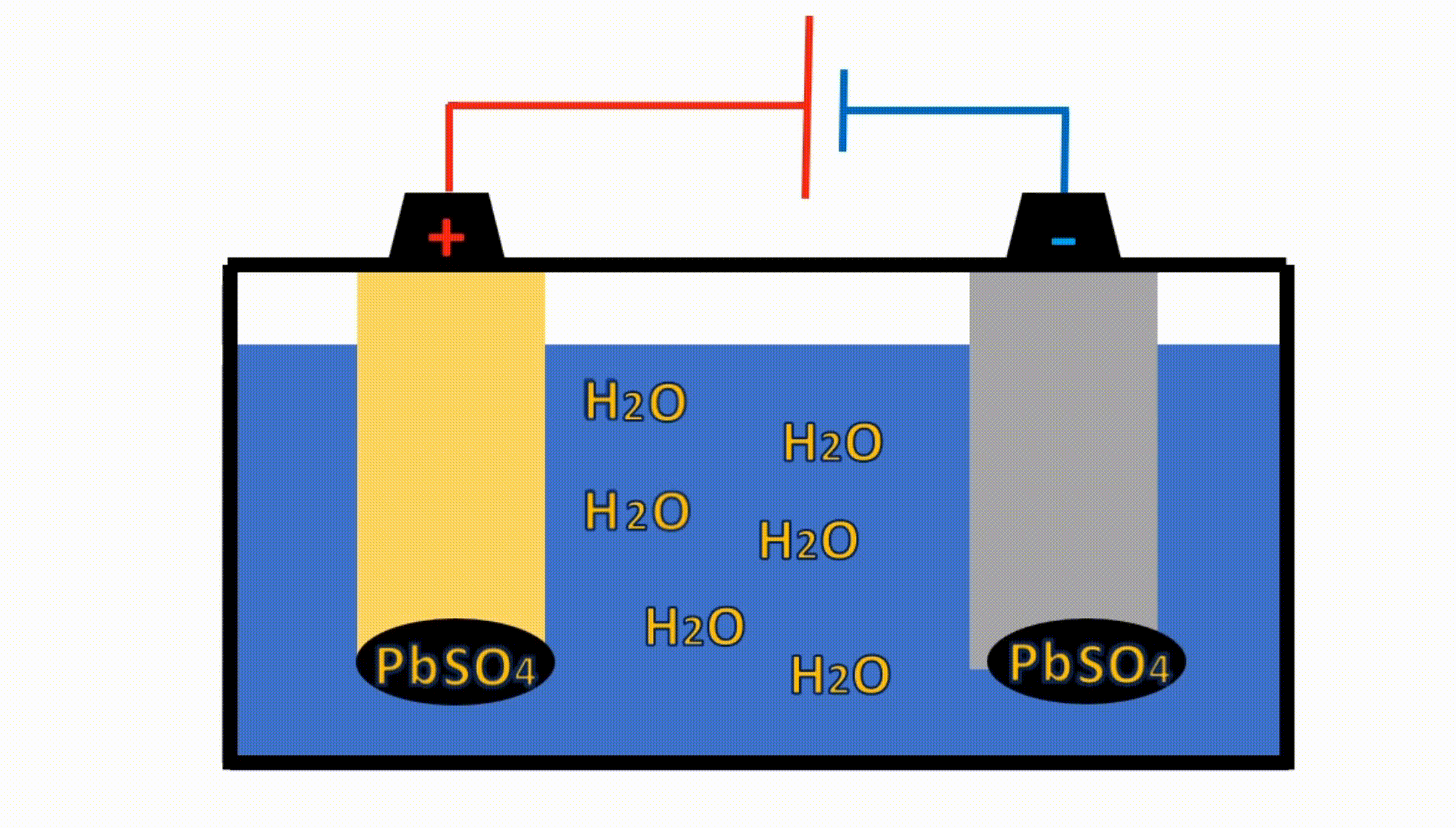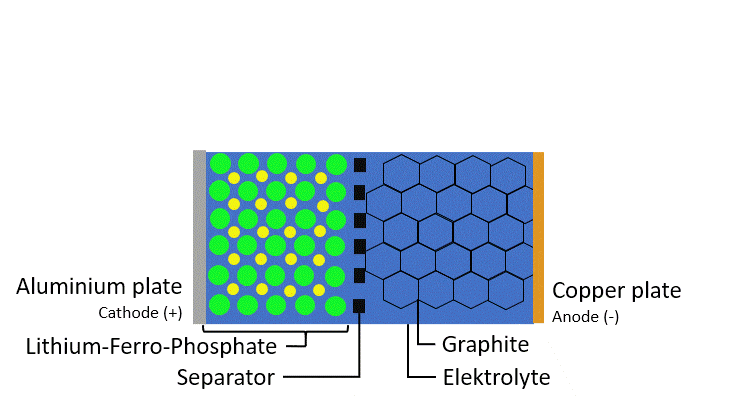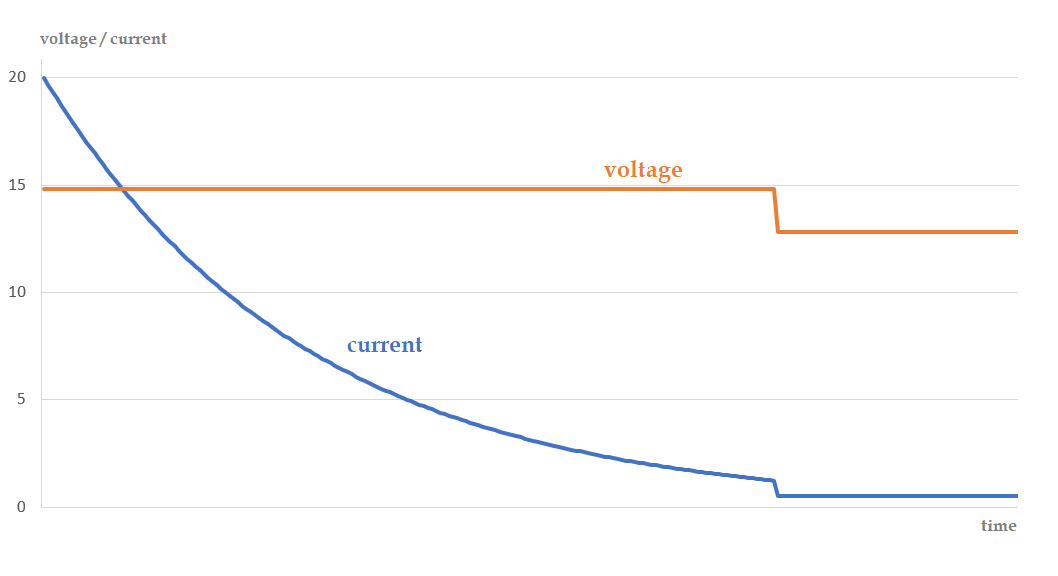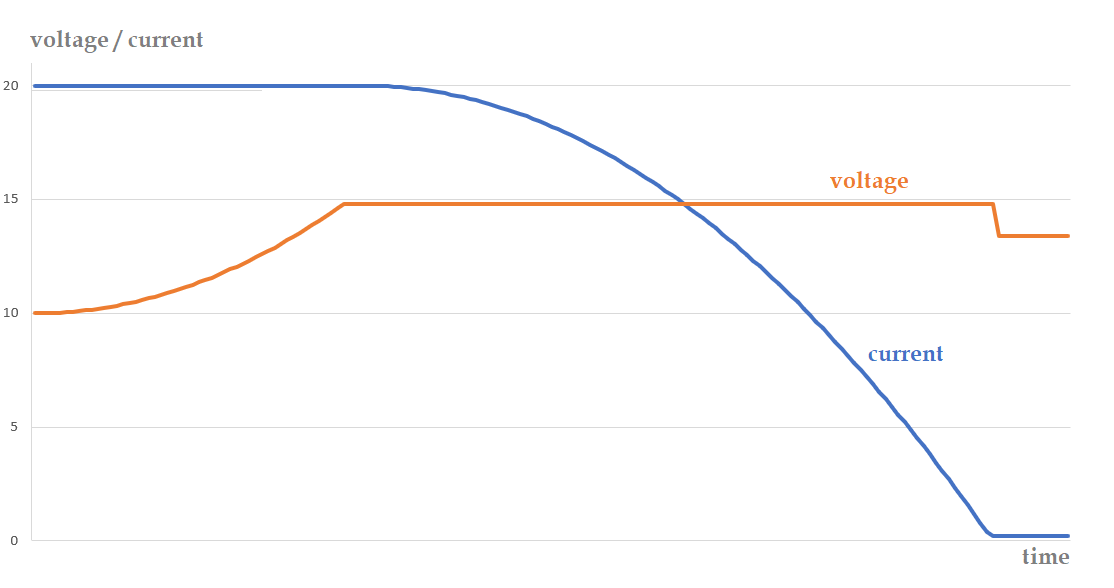When it comes to batteries in pleasurecrafts, caravans or similar, usually rechargeable
accumulators are meant. The following text is about the most common of these types. It explains the basic working principle and what the strengths and weaknesses of each type are. Further, this article wants to inform about what has to
be kept in mind when it comes to recharging each of the different types and how a typical integration
in your mobile home can look like. All of these were questions I had when I started my project and I hope you find it useful for your own.
The most common battery type in cars is the flooded lead-acid-battery. From this type sealed lead-acid-batteries like EFB/AFB, AGM and Gel are derived. What their benefits over the flooded-lead-acid type are, will be explained further down. These days however, more and more lithium batteries are used. Though those can make sense in a caravan as leisure battery, you won`t see them as a starter battery very soon. To understand why this is the case, we first need to understand how these two main types work.
The flooded lead-acid battery usually has two electrodes hanging in a mixture of sulfuric acid and water, which is called a dissociated acid. While the anode (+) is made from lead dioxide, the cathode (-) is pure lead. Well, at least if the battery is fully charged. When a load is connected to the battery, a chemical reaction forms lead(II)-sulfate-crystals (PbSO4) on both electrodes. Another by-product of this reaction is water. This is why a discharged lead acid battery can be described as less acid than a charged one. As you may realize, this reaction has similarities to corroding metal. The reaction for the discharging process for both electrodes is shown below:


Discharging process of a lead-acid battery (simplified)
I want to stress, that the process shown above is much simplified. But it shows in a good way that the processes in those batteries are of electrochemical nature. This means that materials are transformed from one into another, namely lead and lead-dioxide to lead(II)-sulfate.
The
charging process is basically just reversing this reaction. The following animation demonstrates this process.

Charging process of a lead-acid battery (simplified)
One drawback in this regard is, that if this process is not rightly done, other by-products such as hydrogen can, and will
be formed. As a leisure battery, this can be dangerous because of the explosive behavior of hydrogen.
However, by making
the surface of the electrodes as big as possible, very high currents can be
created. This is why this type is ideal for starter batteries. In a typical battery, the electrodes look therefore more like grids than plates, as this makes the surface as big as possible.
One problem
however is the building up of big lead(II)-sulfate-crystals. When the battery only
supports a small current, it is likely that on some parts of the electrodes no
crystals form and already existing crystals grow in size. This is a problem,
because it gets harder and harder to dissolve them. Big
currents over a short time, in contrast, produce small crystals over the full
area, as they have not the time to grow in size. This is commonly known as sulfation.
Another
thing is that you can not use all of its capacity, as there needs to be a remaining
rest of material and acid to support the chemical reaction. This is why only
about 50% of the resources should be used. If the battery is discharged, even more sulfation will also occur.
Other
disadvantages with the lead acid battery are:
Some of the drawbacks of the flooded-lead-acid batteries can be improved by using a sealed-lead-acid battery. In general, those types use different techniques to hold the watery acid and other particles in place. Thus, those types can be installed not only horizontally but also vertical or even upside down. The possibility of lead(II)-sulfate-crystals falling off the electrodes can be neglected, as all material is kept nicely in place. Also, those types are more robust against shock and positioning, some drawbacks are still there, and special charging techniques may be needed.
The most common types of sealed-lead-acid batteries are:
For the use in caravans or boats, the most common type of lithium battery is the LiFePO4 (Lithium Iron Phosphate) battery. This is a type of rechargeable battery that uses a cathode made of lithium-iron-phosphate, an anode made of graphite (carbon), and an electrolyte made of a lithium salt in an organic solvent. As carrier, aluminum (for the cathode) and copper (for the anode) may be used. The battery operates based on the principle of electrochemical reactions of lithium atoms, where lithium-ions and electrons are shuffled between the anode and cathode during charge and discharge cycles. The separator and electrolyte allows positive charged lithium ions to pass through while blocking the movement of the electrons. This enables the chemical reactions to occur at the anode and cathode, while the electrons have to move through the wire, generating an electric current that can be used to power devices.
During charging, a voltage higher than the battery's nominal voltage is applied to the electrodes. The corresponding movement of electrodes generates an electric field which causes lithium-ions to move from the cathode to the anode, where they get embedded lithium in the carbon structure. Because the lithium is now in its pure state and Lithium is highly reactive, it wants to react with the iron phosphate.
This reaction can occure during discharge when the stored lithium ions move from the anode to the cathode, releasing energy in the form of an electric current. The movement of ions is facilitated by the flow of electrons through an external circuit.

Charging and discharging process of a LiFePO4 battery
One of the key advantages of LiFePO4 batteries is their high energy
density, which means they can store more energy per unit weight than
traditional lead-acid batteries. They also have a longer cycle life,
meaning they can be recharged and discharged more often, before they lose
their capacity to store energy.
While there are many advantages, there are also some disadvantages to consider. LiFePO4 batteries are generally more expensive to manufacture than other
types of batteries. This is due to the complexity of their
cathode material and the manufacturing processes required to produce
them. They are also sensitive to high temperatures, which can shorten their lifespan and reduce their overall performance. When a lithium battery is discharged below its minimum voltage, the
chemical reactions inside the battery can become unstable, causing the
formation of lithium metal on the anode. This can lead to a buildup of
internal resistance, which can cause the battery to overheat and
potentially catch fire. To avoid this, built-in protection circuits that prevent over-discharge and over-heating are usually integrated into the battery. Besides these drawbacks also special charging algorithms must be used to protect the battery and use its full performance.
As we have seen, each type of battery has its own advantages and disadvantages. In the following, an overview of the main differences between lead-acid, sealed-lead-acid and lithium-ion is given.
Important to explain in advance is, that the C-Rate corresponds as a multiplication factor of the capacity of the battery. i.e. 1C of a 100Ah battery corresponds to 100A.
In summary, lithium-ion batteries are generally better suited for applications that require high energy density, long cycle life, and fast charging, while lead-acid batteries are better suited for applications that require a lower cost and high power output. This is why lead-acid batteries should still be used as starter battery, while lithium-ion batteries are more and more used as leisure battery.
The used charging characteristics affects significantly the performance, safety, and lifespan of a battery. As discussed before, different types of batteries have different charging characteristics, and it's important to use the correct charging method. In the following only two of many more are explained as those are the most important ones for (sealed)-lead-acid and lithium-ion batteries.
With the constant voltage characteristic, the battery is charged at a constant voltage level, typically between 2.25V and 2.4V per cell for lead-acid batteries. During the initial stages of charging, the charging current is allowed to flow into the battery at its maximum rate, which is typically determined by the battery's internal resistance and the charging system's capacity. As the battery reaches a higher state of charge, its internal resistance increases, and the charging current begins to decrease.
Once the battery is sufficiently fully charged, the charging system usually switches to a lower voltage level, often referred to as "float voltage". This lower voltage keeps the battery fully charged without overcharging it.

Constant Voltage (CV) charging curve
The Constant Current (CC) Constant Voltage (CV) charging characteristic
is a charging profile commonly used for charging rechargeable batteries,
particularly lithium-ion batteries.
During the initial stage of charging, the battery is charged with a constant current until it reaches its maximum charge capacity. This stage is known as the Constant Current stage, and it is typically characterized by a steady increase in voltage as the battery charges.
Once the battery reaches its maximum charge capacity, the charger switches to the Constant Voltage stage. In this stage, the charger maintains a constant voltage across the battery terminals while the current gradually decreases. This is done to prevent overcharging and to ensure that the battery is fully charged. The Constant Voltage stage typically continues until the current reaches a pre-determined threshold, at which point the charging process is complete. At this point, the charger may switch to a maintenance mode to keep the battery topped up.

Constant Current Constant Voltage (CCCV) charging curve
If you want to change an existing lead battery against a lithium battery, it is important to think about the different voltage and charging characteristics of the two.
In older boats or vehicles, the starter and leisure battery usually were of the same type and an isolation diode was used to make sure that current can flow from the alternator to the batteries, but not from one battery to the other.
Because the resistance in conventional lead batteries rises with its state of charge, the most current always flows to the battery which is less charged. If both batteries are fully charged, the alternator may even reduce its voltage to prevent overheating or damage.
If this this technique is used to combine a lead and lithium battery, the different requirements regarding charging and voltage may be a problem. In this case, it can make sense to use a B2B (battery-to-battery charger) charger, for charging the lithium battery. B2B chargers are designed to regulate the charging process and meet the requirments regarding voltage and current, according to the charging characteristic. Another benefits of a B2B charger is, that it can be used for charging the lithium battery even if the source-voltage is lower. The B2B charger simply converts the lower voltage to the correct charging voltage for the lithium battery. In such a system, the starter battery (lead) will be charged from the alternator and the leisure battery (lithium) will be charged by the B2B charger, even if the alternator lowers the voltage to protect the lead-acid battery.
Battery separation by using an isolation diode (left) and a B2B charger (right)
Of course, these considerations have to be made also for the AC charger. In this case, different chargers may have to be used (or one with two separated outputs). Another option is charging the lead battery by an AC charger and the lithium over an B2B charger.
All information above has been carefully collected. However, this article is only supposed to give an overview about what has to be taken care of and doesn`t want to go into depth. Please feel inspired to do more researches and enjoy the challenge of doing stuff yourself.